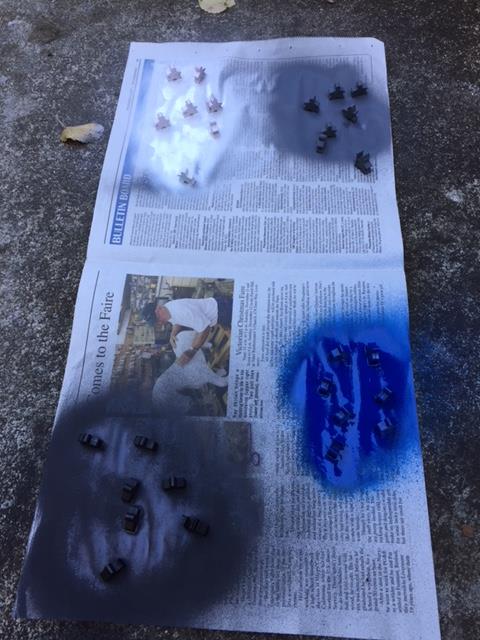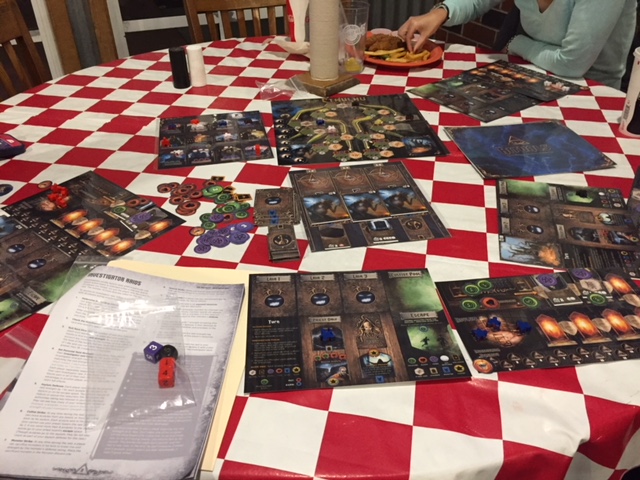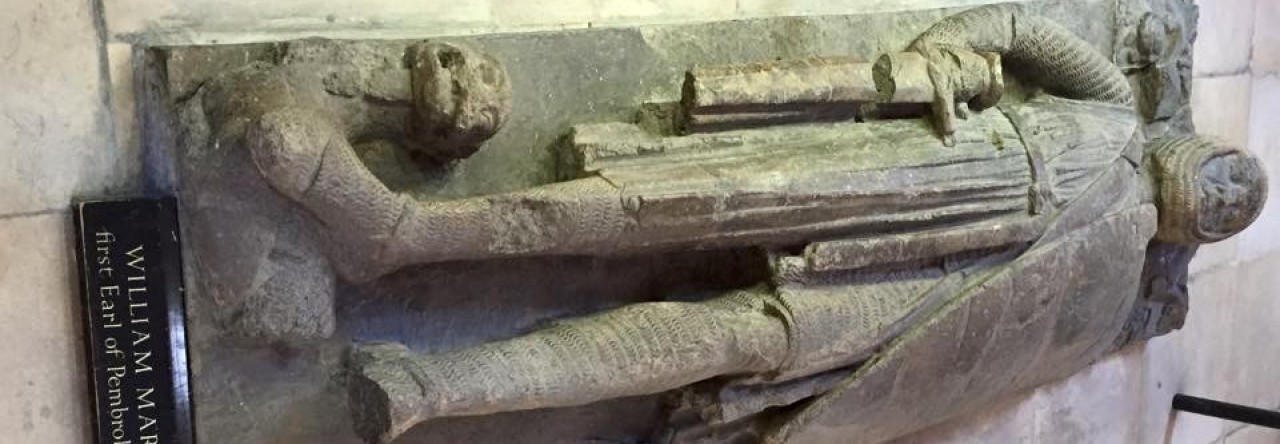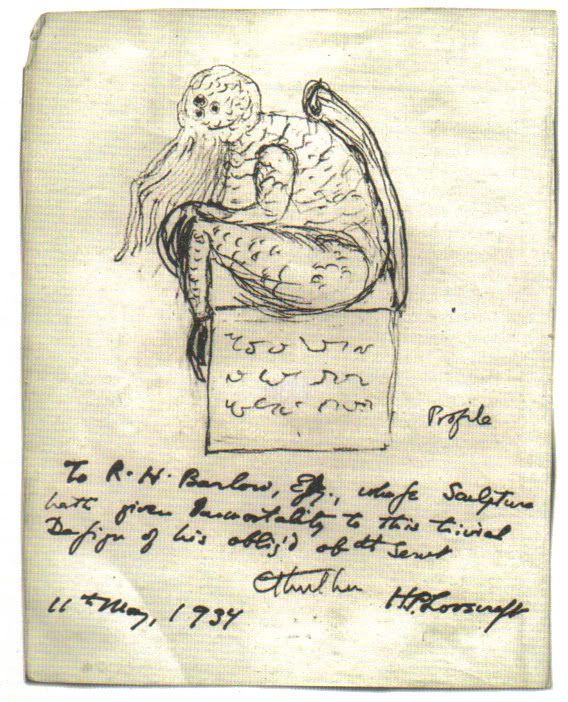https://www.kickstarter.com/projects/1816687860/evil-high-priest/
Might as well lead with the main link. This is my quick review of Evil High Priest that I used their print and play preview to try out at the local board game Meet-Up that I go to every week. This is a new game by noted game designer Sandy Petersen which he co-designed with his son, Lincoln Petersen.
The game is a worker placement game for 2-5 players. You are all part of an evil cult trying to summon your patron Great Old One from the Cthulhu Mythos. There are two cult boards included in the print and play (Cthulhu and the Black Goat) plus all the boards, cards and tokens you would use in the basic game.
The object of the game is to have the most resources (the best places High Priest) when the Great Old One is released. All players are working to summon the Great Old One, no player is working to stop it. Other than the normal worker placement rule of only one worker (cultist in this game) per space, the other interaction is to trigger raids when they are not convenient to the other players.
Before I discuss the game mechanics, a few things about the print and play. The boards are not set to standard paper sizes, so make sure you have a plan on how to print them (I used “poster” settings for the cult boards and then cut the pieces out and taped them together, for example). You can take the files to your local office supplies / printing shop, but color printing on non-standard paper sizes can be pricey. I managed to print everything on my home printer, it just took a little bit of work. Petersen Games should take a look at paper sizes for a print and play file and a printing instructions page would help, especially if you have to explain it to a copy shop. Also, be careful when saving the file. I saved from Adobe Reader, and it flattened the file and I lost an icon on one of the boards when it did that.
I used light card stock and then laminated it using this machine:
AmazonBasics Thermal Laminator
I bought it a while ago for a print and play and card stock terrain projects and for around $20 it does a good job.
The game needs some game pieces and 3 6-sided dice. I have plenty of dice and I could have repurposed some Cthulhu Wars cultist figures, but I didn’t want to take them back and forth to the Meet-up. Instead, I did a quick search and for a design for some meeples I could print on one of my 3D printers. I used these ones, but there really are many, many choices:

I used 2 different types – the wizards with a staff to be the high priests and the regular ones to be the acolytes. I wish I have made the wizards about 15% larger than the others, but they served well enough. I also did not want to switch out colors 5 times and print 5 times, so instead I did this:

Once the paint dried I ended up with 5 different colors of meeples (red, white, bluse, black and gray). I used spray paint, but model paint for miniatures would work just as well.
I happened to have a 1″ circle punch, so that made punching out most of the circular tokens quick. That was a little large, you could use a 3/4″ one for the smaller tokens and the 1″ one for the larger tokens worth 3 units each if you wanted. A circular punch is a lot faster and neater than using scissors, but not needed if you do not have one. There are punches in all sorts of shapes, check out the scrapbooking section of your local crafts store.
In the end, it ended up looking something like this in the Meet-up:

Overall, it looks good and helps in playing. I like the fact that the turn order and the victory point values are on each priest card.
The game itself
Like almost all worker placement games, you pick a turn order and then each player places a worker and then you rotate with each other player in turn placing workers until there no more workers to be placed. You then resolve the skulk action and the action phase ends. You then resolve the preparation phase which involves one of the boards (ritual board) and return cultists that were used back to their pool unless they are still performing a ritual.
There are 5 resources in the game – treasure, blood, magic, spellbooks and Elder Signs and that is the ascending order of victory point value as well, with treasure only valuable in the end game if you have the most. Different action squares cost different (or no) resources in addition to having a cultist placed there and sometimes the cultists themselves are the cost (except there is a no self sacrifice rule so one of their companions is sacrificed).
There are three main boards and a player board that you can perform actions on. These are the Town board (get or exchange resources or become first player), the Cult board (get Elder Signs), the Ritual Board (gain more resources at the cost of 2 or more turns use of your cultist), and the Priest board (everyone has one, only the priest can be used). The ritual board only becomes active after the first raid by investigators occurs.
In the basic game, you only get generic monsters. There are no unique Priests, Monsters or Investigators. These will be added to the game via an expansion and potentially via stretch goals unlocked in the campaign. This made the first play through somewhat generic. An easy fix for the monsters would be to name them and add flavor text with no rules text and the 5 power. *poof* you are now summoning Sandy’s Dark Young instead of a generic monster. Same for the 5 starting high priests. Give them each a name and flavor text and no ability. Vary the art on the cards making, some women and some men and maybe even non-human and you instantly have a game with more flavor with just a little effort and cost.
The game itself played well. We played 4 players and first time for this game for all of us, but we all have played worker placement games before. It took us 2.5 hours and we were all pretty even until about 2 hours in and an ill-timed raid against me knocked me so far back that I never recovered. The designers say 60 to 90 minutes play time and I would add 15 minutes to set-up and tear down the game. We got faster as we learned the game, so 90 minutes is probably doable.
The mechanics tie into the genre. As you break more and more seals, you attract the attention of investigators that raid you. Your cultists start in the asylum (you have 6 and 4 start there) and are not available until they “escape”. You sacrifice cultists (goes back to asylum) and monsters to stop raids and once they penetrate those defenses, the innate defenses you build up slow down and hopefully stop the investigators. If not, they destroy resources. The raids hit everyone, not just the person that triggered it and it is a nice touch. It also adds some chance for all players to do something, even in other peoples turns.
Unless you use your priest to Chant (action on the Priest board) or otherwise gain a Chamber card, any resources you gain are unprotected. You use resources to get Elder Signs which are worth the most victory points but it is not the only way to win.
I liked the different areas to play in, but thought that only having chambers vary made it a little to plain. Switching out Cult boards (2 in the basic game plus 4 more in the expansion) will make the game suitably different each time. The dice are only used to set raid strength (1 to 3 dice so from 1 to 18 total).
All 4 of us liked the game and want to play it again, so it passed the first test. Compared to other “premium” worker placement games, the base game looks shy on components. very few cards and the resources being tokens (most premium games use wooden tokens of some kind at least). I know of a few rules we got a little wrong the first play through, but I found the rule book well done in general.
Since this is still in Kickstarter while I write this, they still have time to add more marketing elements to it. The design looks very solid, but I expect that from Petersen games. They just need to add extra sparkle and fun to the game to make it stand out a little. The extra miniatures you can add do not count for me as I think the boards will need to be much bigger else they will block game text. I also found some of the shadowed white print on parchment background a little hard to read.
Also, since this is a Kickstarter, Petersen Games has a reputation for delivering what they promised (Sandy Petersen even mortgaged his house to make sure that happened one early Kickstarter) but they are generally late in delivering (not worse than the average Kickstarter). They say they have changed it this time and are ready to produce, but they are not great at delivering on time but good at delivering great games.
Other good Worker Placement games
Viticulture – Essential Edition


